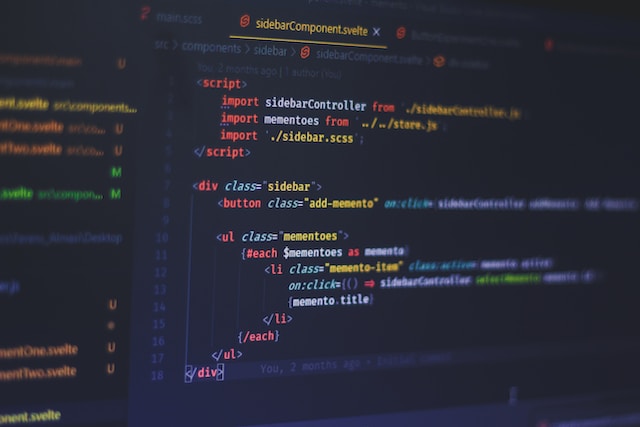Introduction to Frontend Frameworks
Are you a web developer or designer on the hunt for the perfect frontend framework? Look no further because we’ve got you covered! With so many options out there, finding the right one can feel a bit overwhelming. But fret not – this handy list will help make your decision-making process a whole lot easier.
In this blog post, we’ll dive into the world of frontend frameworks and explore what factors to consider when choosing one for your project. We’ll also take an in-depth look at our top five picks: ReactJS, AngularJS, Vue.js, Bootstrap, and Materialize CSS. From their unique features to their benefits for developers like you, we’ve got all the insider information!
But wait…there’s more! We’ll even provide a side-by-side comparison of these top contenders so that you can see how they stack up against each other. And finally, we’ll give you some expert tips on how to choose the perfect frontend framework that aligns with your project goals.
So get ready to supercharge your web development journey as we embark on this insightful exploration of frontend frameworks. Let’s jump right in and find the ideal solution for bringing your designs to life!
Factors to Consider When Choosing a Frontend Framework
When it comes to choosing a frontend framework for your project, there are several factors that you need to consider. Each factor plays a crucial role in determining the success and efficiency of your development process.
Think about the scalability and performance requirements of your project. If you expect high traffic or plan to expand in the future, opt for a framework that can handle large volumes of data and has good performance optimization features.
Consider the learning curve associated with each framework. Some frameworks may require more time and effort to master than others. Evaluate whether your team has the necessary skills or if they will need additional training.
Next, take into account the community support and documentation available for each framework. A strong community ensures continuous updates, bug fixes, and access to helpful resources when troubleshooting issues.
Additionally, consider the compatibility of the frontend framework with other tools or libraries you may be using in your project. Integration should be seamless without causing conflicts or dependencies that could hinder development progress.
Another important factor is the availability of plugins and extensions specific to each framework. These add-ons can significantly enhance functionality while saving development time by providing pre-built components or features.
Last but certainly not least, assess the long-term viability of each frontend framework. Look at its popularity, adoption rate within industry leaders, and active maintenance by developers to ensure ongoing support in years to come.
By carefully considering these factors based on your project’s unique requirements and constraints, you’ll be able to make an informed decision when choosing a frontend framework that aligns perfectly with your needs!

Top 5 Frontend Frameworks: Features and Benefits
When it comes to choosing a frontend framework for your web development project, there are plenty of options available. Each framework comes with its own unique features and benefits that cater to different needs and preferences. Let’s take a closer look at the top five frontend frameworks on the market today.
1. ReactJS: This JavaScript library developed by Facebook allows you to build reusable UI components, making it easier to manage complex user interfaces. Its virtual DOM efficiently updates only the necessary parts of your application, leading to improved performance.
2. AngularJS: Developed by Google, AngularJS is a powerful framework that offers two-way data binding and dependency injection. It provides a structured approach to building dynamic web applications, making it ideal for large-scale projects.
3. Vue.js: Known for its simplicity and ease of use, Vue.js is gaining popularity among developers. It offers reactive data binding and component-based architecture, allowing you to create interactive interfaces effortlessly.
4. Bootstrap: If you’re looking for a responsive design framework that simplifies prototyping and frontend development, Bootstrap is an excellent choice. With its extensive library of CSS stylesheets and JavaScript plugins, you can quickly build visually appealing websites.
5. Materialize CSS: Inspired by Google’s Material Design principles, Materialize CSS provides ready-to-use components that give your website a sleek, modern look while maintaining responsiveness across various devices.
Each frontend framework has its strengths depending on the specific requirements of your project – whether it’s scalability, ease of use, design aesthetics or performance optimization – so be sure to evaluate them based on their individual features before making a decision!
ReactJS
ReactJS is one of the most popular frontend frameworks in the market today. Developed by Facebook, it has gained a massive following due to its efficiency and flexibility. With ReactJS, developers can build interactive user interfaces for web applications.
One of the standout features of ReactJS is its component-based architecture. This allows developers to create reusable UI components, making code organization easier and increasing overall productivity. Additionally, React’s virtual DOM efficiently updates only the necessary parts of the webpage when changes occur, resulting in faster rendering speeds.
Another advantage of using ReactJS is its strong community support. There are countless resources available online, including tutorials, documentation, and libraries that can help you get started with your project quickly.
Moreover, ReactJS seamlessly integrates with other tools and libraries, such as Redux for state management or Next.js for server-side rendering. This makes it highly adaptable to different project requirements.
In terms of performance, ReactJS shines by optimizing application speed through efficient memory usage and minimal re-rendering thanks to its virtual DOM feature.
If you’re looking for a powerful frontend framework that offers scalability, efficiency, and excellent community support – look no further than ReactJS!
AngularJS
AngularJS is a popular frontend framework that offers a wide range of features and benefits. Developed by Google, AngularJS provides a robust structure for building dynamic web applications.
One of the key advantages of AngularJS is its ability to create single-page applications (SPAs) with ease. With its powerful data binding and dependency injection capabilities, developers can build highly interactive and responsive UIs.
Another notable feature of AngularJS is its modular architecture, which allows for easy code reuse and maintainability. With the help of modules, developers can organize their code into smaller components, making it easier to manage and update.
In addition, AngularJS has a built-in testing framework called “Karma,” which makes it simple to write unit tests for your application. This ensures that your code remains bug-free and reliable.
Furthermore, AngularJS has a large community support with plenty of resources available online. From tutorials to documentation to forums, developers can easily find assistance when facing any challenges during development.
If you’re looking for a frontend framework that offers flexibility, scalability, and excellent performance for your web application project, then AngularJS is definitely worth considering.
Vue.js
Vue.js is a versatile and lightweight frontend framework that has gained significant popularity in recent years. What sets Vue.js apart is its simplicity and ease of use, making it a great choice for both beginners and experienced developers.
One of the key features of Vue.js is its reactive data binding system, which allows developers to easily update the user interface based on changes in the underlying data. This makes building dynamic and interactive web applications a breeze.
Another standout feature of Vue.js is its component-based architecture. With Vue.js, you can break down your application into reusable components, making it easier to manage complex projects and promote code reusability.
Vue.js also boasts an extensive ecosystem with a vibrant community contributing to its growth. There are plenty of plugins, libraries, and tools available that enhance the development experience with added functionality and support.
In addition to these features, Vue.js has excellent performance due to its virtual DOM implementation. It efficiently updates only the necessary parts of the DOM when changes occur, resulting in faster rendering times.
If you’re looking for a frontend framework that offers simplicity without compromising on power or performance, Vue.js should definitely be at the top of your list. Its intuitive syntax, combined with robust features, makes it an excellent choice for building modern web applications.
Bootstrap
Bootstrap is a popular frontend framework that has gained widespread recognition and adoption among web developers. It offers a wide range of features and benefits that make it an attractive choice for building responsive and mobile-first websites.
One of the key advantages of Bootstrap is its extensive library of pre-built components, such as navigation bars, buttons, forms, carousels, modals, and much more. These ready-to-use components save developers time and effort by providing them with a solid foundation to build upon.
Another notable feature of Bootstrap is its grid system. This powerful grid system allows developers to create responsive layouts that adapt smoothly to different screen sizes. With just a few lines of code, you can easily create columns and rows that automatically adjust based on the device being used.
In addition to its comprehensive set of components and grid system, Bootstrap also provides excellent browser compatibility. It ensures that your website looks great and functions properly across various browsers and devices.
Furthermore, Bootstrap offers extensive documentation along with active community support. Whether you’re a beginner or an experienced developer, you’ll find plenty of resources to help you get started with Bootstrap or troubleshoot any issues you may encounter along the way.
Bootstrap is an incredibly versatile frontend framework that simplifies the process of building modern websites. Its robust features, combined with ease of use, make it an ideal choice for projects ranging from small personal blogs to large-scale enterprise applications.
Materialize CSS
Materialize CSS is a popular frontend framework that offers a wide range of features and benefits for web developers. With its clean and modern design, Materialize CSS allows you to create visually appealing websites with ease.
One of the key advantages of Materialize CSS is its responsive grid system. This makes it easy to create layouts that adapt seamlessly to different screen sizes, ensuring your website looks great on desktops, tablets, and mobile devices.
In addition to its responsive capabilities, Materialize CSS also provides a comprehensive set of pre-built components. These include buttons, forms, cards, navigation bars, modals, and more. By using these readymade components, you can save time and effort in coding from scratch.
Furthermore, Materialize CSS incorporates the principles of Google’s Material Design guidelines. This means that not only will your website look aesthetically pleasing, but it will also provide users with an intuitive and user-friendly experience.
Another noteworthy feature of Materialize CSS is its extensive documentation and community support. Whether you are a beginner or an experienced developer, you can easily find resources such as tutorials, guides, and forums where you can seek help or share ideas with other developers.
Overall, MaterilaizzeCSS seems like a solid choice for frontend development projects due to its responsiveness, well ass readymade components that can help speed up the development processes. So, if you’re looking for a frontend framework that combines aesthetic appeal with functionality, be sure to consider Mateerializzee CST!

Comparison of the Top 5 Frontend Frameworks
When it comes to choosing the right frontend framework for your project, there are several options available. In this section, we will compare the top 5 frontend frameworks – ReactJS, AngularJS, Vue.js, Bootstrap, and Materialize CSS – to help you make an informed decision.
ReactJS is a popular choice among developers due to its component-based architecture and virtual DOM rendering. It allows for efficient updates and offers excellent performance. On the other hand, AngularJS provides a comprehensive solution with extensive features like two-way data binding and dependency injection.
Vue.js is gaining popularity rapidly due to its simplicity and ease of integration with existing projects. It offers flexible templating options along with reactive components. Meanwhile, Bootstrap provides a robust set of pre-designed UI elements that can be easily customized as per your requirements.
Materialize CSS brings Material Design principles into play by providing an easy-to-use framework for building responsive websites. It offers an extensive collection of ready-to-use components and styles that ensure consistency in design across different devices.
Each of these frameworks has its own strengths and weaknesses based on factors like learning curve, community support, documentation quality, etc. Therefore, it’s important to evaluate your project requirements before making a decision.
Remember that there is no one-size-fits-all solution when it comes to choosing a frontend framework. Consider factors such as scalability, performance needs or specific features required for your project while comparing these frameworks.
By understanding the key differences between these top 5 frontend frameworks mentioned above – ReactJS, Angular JS, Vue. Js, Bootstrap, and Materialize CSS- you can make an informed decision that aligns with your project goals!
How to Choose the Right Frontend Framework for Your Project
When it comes to choosing the right frontend framework for your project, there are several factors to consider. You need to think about the specific requirements of your project and what functionalities you will need from a framework. Are you building a complex web application or a simple website? This will help determine whether you need a more feature-rich framework like ReactJS or AngularJS or if something simpler like Bootstrap would suffice.
Another important factor to consider is the learning curve associated with each framework. If you’re starting from scratch or have limited experience in frontend development, it might be best to choose a framework that has good documentation and an active community that can provide support and guidance as you learn.
Additionally, consider the performance implications of each framework. Some frameworks are known for their speed and efficiency, while others may be slower and require more resources. Depending on the scale of your project and its intended audience, this could be an important consideration.
It’s also worth considering how well-supported each framework is in terms of updates and maintenance. Frameworks that are regularly updated tend to have better security measures in place and may offer new features that can enhance your project over time.
Take into account any personal preferences or team dynamics when making your decision. If members of your team already have experience with certain frameworks, it might make sense to go with one they are familiar with to streamline development processes.
There is no one-size-fits-all answer when it comes to choosing a frontend framework. It’s important to carefully evaluate each option based on your project’s specific needs before making a decision.
Conclusion
In this ever-evolving world of web development, choosing the right frontend framework for your project is crucial. While there are numerous options available, we have narrowed down the top 5 frameworks that are highly popular among developers – ReactJS, AngularJS, Vue.js, Bootstrap, and Materialize CSS.
Each framework has its own unique features and benefits. ReactJS offers excellent performance and a component-based architecture. AngularJS provides a robust structure with dependency injection capabilities. Vue.js combines ease of use with powerful functionality. Bootstrap offers ready-to-use components and responsive design out of the box. Materialize CSS provides a sleek material design aesthetic.
When making your decision, consider factors such as project requirements, scalability needs, community support, learning curve, performance benchmarks, and developer preference. Keep in mind that all these frameworks have their strengths and weaknesses; what works well for one project may not be suitable for another.
Ultimately, the right frontend framework will depend on your specific needs and goals.
Having a solid understanding of each framework’s features can help you make an informed decision that aligns with your project requirements.
Remember to stay up-to-date with emerging trends in frontend development as new frameworks continue to emerge.
With careful consideration and research, you’ll be able to choose the perfect frontend framework that sets you up for success in crafting exceptional user experiences on the web!
So go ahead, start exploring these top-tier frontend frameworks today, and take your web development projects to new heights! Happy coding!

